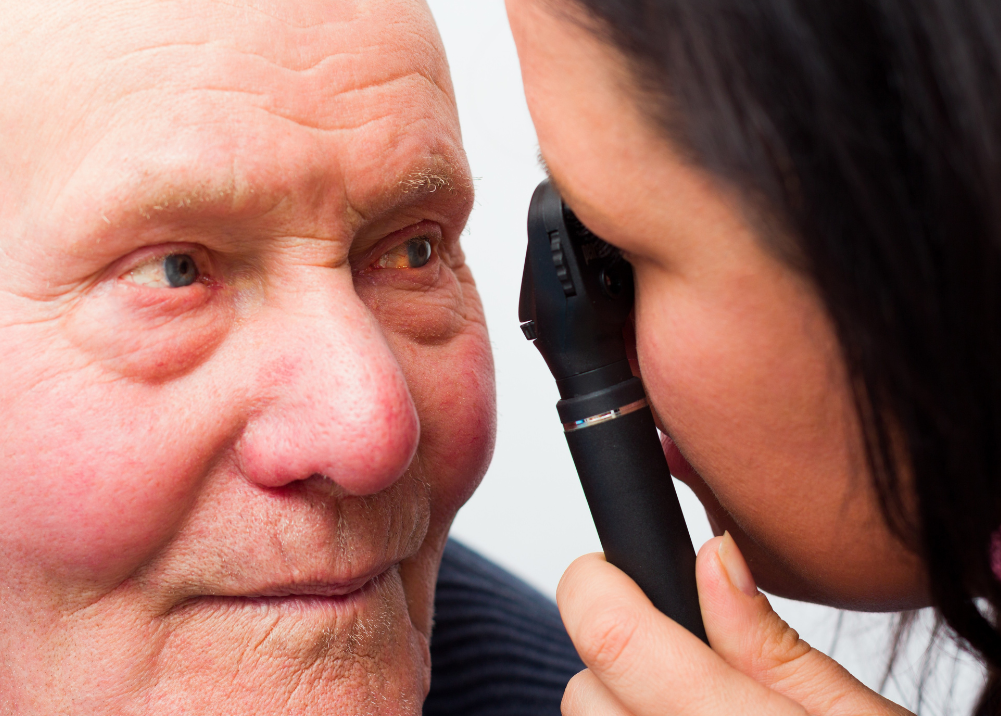Cataract Symptoms, Causes, & Prevention
Dr LivingoodShare

Cataracts are a common eye condition that most of us will experience as we get older. But even though cataracts are tough to avoid when we near 100, plenty of us get cataracts when we’re still young, in part due to lifestyle habits.
But what exactly are those habits, and what other ways to prevent cataracts from forming? Let’s take a closer look at what cataracts are, what causes them, and some lifestyle strategies you can employ to make cataracts less likely in your future.
What Are Cataracts, Exactly?
Cataracts aren’t eye infections, they are actually clouds that form in the lenses of the eyes. When you develop a cataract, it can seem like you’re looking through a cloudy or fogged-up lens where you would normally have clear vision. Naturally, cataracts can make it very difficult to see or perform technical tasks, like driving a car or reading a book.
Those “clouds” are actually loose, hanging proteins that have broken down over time. Cataracts typically develop slowly and don’t disturb your eyesight too much early on. But they can eventually lead to effective blindness.
Although many people only develop a cataract in one eye, you can get cataracts in both eyes simultaneously. Cataracts can also develop at different rates in both eyes.
Where Do Cataracts Come From?
Your eyes normally provide clear vision through a water and protein layer that comprises your eyes’ lenses. However, certain factors or environmental hazards can cause the proteins of your eyes’ lenses to break down with time.
After those proteins break down, they hang around your pupil, clouding your lens and making it difficult to see clearly. Because many aspects of our bodies age or start to break down as we get older, cataracts become more common as you get older as well.
However, cataracts can also form due to other issues or conditions including:
- Eye injuries or surgeries
- Radiation treatment that targets your upper body, such as some treatments for cancer
- UV radiation exposure – if you spend a lot of time in the sun without sunglasses, your eyes could develop cataracts as the proteins break down from UV radiation
- Steroids that are used to treat conditions like lupus and arthritis
- Increased blood sugar
- Certain prescription drugs that are used to support mental health conditions
How Common Are Cataracts?
Cataracts are not uncommon – many otherwise healthy adults start to develop cataracts after the age of 40. However, due to the slow development speed of most cataracts, the majority of people with cataracts don’t notice symptoms until their 60s.
The development of cataracts is more common among people over the age of 80. Over 50% of those aged 80 or more have had at least one cataract.
Here are some risk factors that are more common in people who:
- Smoke regularly
- Live in areas with bad air pollution
- Family history
- Drink alcohol heavily
- Age-related cataracts
Types of Cataracts
Some different types of cataracts that vary on the person include:
- Cortical cataracts, which affect the edges of your lenses. These are sometimes characterized by wedge shapes or streaks
- Nuclear cataracts affect the center of your lenses. These can sometimes cause nearsightedness in individuals who otherwise had perfect vision
- Posterior subcapsular cataracts, or cataracts that affect the back of your lens. These can significantly impact your reading vision and light sensitivity
- Congenital cataracts, which are cataracts you are born with. These are most often due to genetic factors
Symptoms of Cataracts
Cataracts’ primary symptom is blurry or foggy vision, and the severity of this symptom depends on how long you’ve had cataracts and how much they have developed. But you may also experience ancillary symptoms that may cause vision changes like:
- Glares or halos around lights, such as the oncoming headlights from cars. A decrease in night vision can be dangerous when driving at night
- Double vision
- Insensitivity to light, making it difficult to see in the dark
- Oversensitivity to light, which can cause pain or discomfort when exposed to bright sunlight or other light sources
- Differences in color perception
- Cloudiness
However, cataracts aren’t typically painful, although they can sometimes lead to discomfort by making your eyes overall more sensitive to stimuli like bright sunlight.
Ways to Decrease the Risk of Cataracts
If you develop one or more cataracts, you usually need to seek medical attention in order to remove the cataract and receive proper treatment. Therefore, it’s a good idea to prevent cataracts from forming at all.
You can lower the risk of developing cataracts by following some smart lifestyle strategies and adjusting your daily habits now.
- Always protect your eyes from ultraviolet (UV) radiation by wearing sunglasses whenever you step outside into brighter light. For example, if you plan to go to the beach or spend a few hours at a sunny park, wear sunglasses and prevent the sun’s radiation from damaging your eyesight
- Always make sure to attend regular eye exams. An optometrist or ophthalmologist can examine your eyes and let you know if a cataract is forming, as well as investigate any other potential eye health issues. Eye examinations can help your vision in the long run and prevent further eye problems. Eyeglasses or contact lenses may be recommended to those who experience vision loss or troubles.
- Stop smoking and drinking excessively if you are currently doing either. Smoking and drinking excessively can have negative impacts on your overall health, not just the health of your eyes
- Eat plenty of fruits and vegetables that contain antioxidants and other vitamins. Antioxidants reduce free radical molecular damage, which may be one of the primary causes of eye protein degradation and eventual cataract formation. Some of the best fruits and vegetables to eat include berries, citrus fruits, broccoli, and more
- If you have diabetes or another medical condition, be sure to keep that condition and check and prevent it from progressing, as conditions like diabetes can lead to cataract formation
Home Remedies
- Diet: Eating anti-inflammatory foods that are high in antioxidants can have a positive effect on your eye health. Carotenoids are a powerful type of antioxidant, essential in protecting your eye health. Carotenoids work by absorbing UV light and other rays like blue light. Carotenoids are present in many fruits and vegetables like carrots, leafy greens, cruciferous vegetables, and citrus fruits. These antioxidants are also in wild-caught fish like salmon, mackerel, sardines, and herring.
- Vitamins: The top Vitamins for eye health include Lutein which is found in leafy greens, eggs, and citrus foods, Zeaxanthin, Vitamin C, Vitamin E, Zinc, Vitamin A, and Omega 3s. These vitamins work by lowering the risk of macular degeneration, protecting the eye’s tissue, promoting proper cell growth, controlling inflammation, fighting free radicals, and assisting your body in absorbing more minerals and nutrients. Livingood Daily Eye Support combines all of these vitamins and minerals into one supplement that can be taken in one dose daily!
Cataract Surgery
Typically, an ophthalmologist (eye doctor) will determine if you need cataract surgery to repair your vision or if the natural lens of your eye isn’t cloudy. An example of eye surgery for cataract removal that is commonly used is called Phacoemulsification. Cataract surgery is a common procedure used to repair the natural lens of the eye that helps prevent future vision problems.
Summary
As you can see (no pun intended), cataracts can be difficult to deal with if allowed to develop fully. But you can leverage some good lifestyle habits and strategies like we described above and prevent cataracts from affecting you or developing well ahead of your older years.
Dr. Livingood, yes that is his real name, is the Founder of drlivingood.com natural health site and also the founder of Livingood Daily. He has authored two Amazon #1 Best Selling Books Livingood Daily and Make Food Simple. In 2007 after nearly losing his father to health conditions, Dr. Livingood was prompted to find a health care system to save his father’s life. Where medicine failed Dr. Livingood discovered solutions that got his father off 15 medications and overcame major heart and autoimmune conditions. As a Doctor of Natural Medicine and DC, he now serves thousands of people in Morrisville, NC, and millions through his online and media presence. Dr. Livingood, his wife Jessica, and three kids spend their lives leading people nationally and locally in the hopes that others can experience real health.
Sources
Cataract Overview | Cleveland Clinic
Cataract Symptoms & Treatment | Mayo Clinic
Share
Related Articles
Most Popular
-
The 5 Amazing Benefits of Omega-3s
August 13, 2024 -
Healing Your ‘Second Brain’: The Path to a Healthier Gut
August 13, 2024





